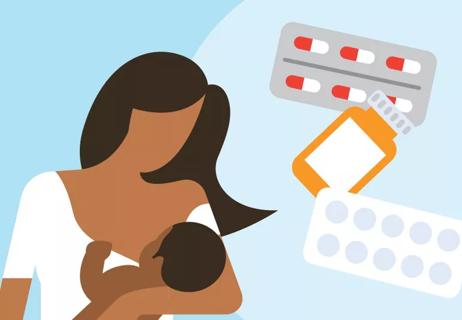Essential over-the-counter items for the illnesses and ailments of life

It’s about 9 o’clock, and all of a sudden, someone in your house feels terrible. It could be a throbbing headache … or a nasty cough … or red-and-itchy eyes. Maybe it’s all three.
Advertisement
Cleveland Clinic is a non-profit academic medical center. Advertising on our site helps support our mission. We do not endorse non-Cleveland Clinic products or services. Policy
Bottom line? You need to find relief, fast.
Keeping a well-stock medicine cabinet is key to addressing the headaches life throws at you and your family. So, what should absolutely, positively be in there? That is what we’re going to find out from family medicine physician Neha Vyas, MD.
As you put together your medicine cabinet shopping list, Dr. Vyas says to consider six different categories. Let’s look at what falls into each one.
Nobody likes feeling pain, right? Well, that explains why it’s a good idea to have nonsteroidal anti-inflammatory drugs (NSAIDs) or acetaminophen on hand to help relieve headaches, body aches or a fever.
You probably know NSAIDs as:
Acetaminophen – which is in Tylenol® and other medications – is a pain reliever and fever reducer but isn’t an NSAID. The reason? It doesn’t have anti-inflammatory properties. “But acetaminophen works well for pain and is especially helpful to take in place of NSAIDs for anyone with kidney issues,” notes Dr. Vyas.
Advertisement
Pediatric pain relievers typically use ibuprofen or acetaminophen, she adds. But aspirin isn’t recommended for children and has been linked to Reye’s syndrome, a condition that targets the brain and liver.
A tough workout or a long day of working in the yard can leave for feeling pretty creaky. When your muscles scream for help, consider using:
Few of us get through cold and flu season without picking up a case of the crud. These respiratory infections can give you a runny nose, sore throat, sinus pressure and a cough that won’t stop.
Fight back with medications such as:
Let’s face facts: There’s really no escaping allergens as you go through life. So, when allergy symptoms such as a runny nose, red eyes and general itchiness begin, it’s best to have a treatment option on hand.
Dr. Vyas recommends getting an antihistamine such as:
“Those are great to have around if you have seasonal allergies,” she continues. She also suggests the use of an antihistamine if you’re experiencing a runny nose, sneezing or itchy eyes that sometimes signal the start of a respiratory infection.
Heartburn, a rumbly tummy and … well, let’s just say “uncomfortable” bathroom visits can turn any day pretty miserable. Here’s what may help if you’re dealing with:
Advertisement
Are your arms and legs a buffet for mosquitoes? Do you break out in a rash just from looking at poison ivy? If so, it’s a good idea to have some stop-the-itch products on hand to bring relief.
Dr. Vyas recommends stocking:
Boo-boos happen. Here’s what you need when they do:
Advertisement
Medicine comes with an expiration date — and that’s something that deserves your attention.
Out-of-date medication is less effective and maybe even risky because of chemical changes that can happen over time. Some older medications pose a bacteria risk, too. “If your medicine is expired, do not use it,” advises the U.S. Food and Drug Administration.
Dr. Vyas recommends doing a seasonal inventory every six months to make sure the medications in your cabinet are still good. (Expiration dates are typically printed on labels or stamped on bottles or cartons.)
After cleaning out your cabinet, it’s important to discard the old medicine safely. Then, next time life comes at you, you’ll be ready.
To hear more on this topic from Dr. Vyas, listen to the Health Essentials Podcast episode, “What Should Be In Your Medicine Cabinet.” New episodes of the Health Essentials Podcast publish every Wednesday.
Advertisement
Learn more about our editorial process.
Advertisement

Talk to your child about the dangers these viral videos pose to their health

Be smart and safe when using OTC pain killers

Vaccination is best for prevention, but if you get sick with COVID-19, treatments are available

With some exceptions, most are OK

The result is a huge win for anyone at risk of an opioid overdose

Pay close attention to the way your body reacts

Be sure to tell your doc about over-the-counter pills and powders

Most recommended precautions center around minimizing bruising or swelling

Type 2 diabetes isn’t inevitable with these dietary changes

Applying a hot or cold compress can help with pain